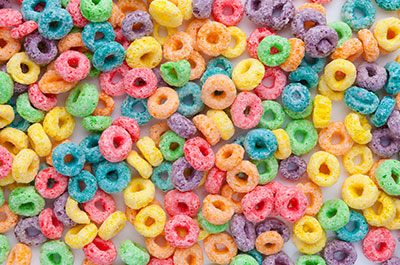Noodles are a go-to meal option for many busy families. They’re quick, easy to prepare and tasty. Unfortunately, if you’re prone to overindulging, they’re not always the best choice.
“There’s a growing variety of noodle options appearing on grocery store shelves, from bean-based to rice to pastas made of ancient grains,” says Alyssa Katz, MS, RD, a community registered dietitian at Henry Ford Health. “And some of these noodles provide vitamins and minerals that you may not get from white pasta.”
A Closer Look At Noodle Varieties
Classic enriched white pasta is made with semolina flour and enriched with B vitamins and minerals like iron. And in a head-to-head comparison, standard enriched noodles have more protein than quinoa, rice and wheat varieties, with similar fiber content.

Meet With A Dietitian
“Where pasta becomes problematic is with portion sizes,” Katz says. There’s about 47 grams of carbohydrates in a half cup of dry white pasta. This is a reasonable amount of carbohydrates for one meal. The trouble is, most people eat far more than a cup in one sitting, which is why pasta gets such a bad rap.
Still, no one is going to dispute the benefits of incorporating more whole grains and legumes in your diet—and noodles are a great starting point. According to USDA recommendations, at least half of the grains you eat each day should come from whole grain sources.
So while a packet of ramen or a bowl of spaghetti might hit the spot for a quick and easy lunch, there are healthier noodle choices out there that may give you a greater nutrient punch:
- Legume noodles: Noodles made from lentils, chickpeas and black beans pack a lot of protein and fiber. “But they are still high in carbohydrates, so it’s important to watch your portion sizes,” says Katz. Whether you choose noodles made with lentils, chickpeas or black beans, there’s often a lot of starch—and foam—involved in the cooking process. To prevent them from boiling over, stir frequently. Legume noodles are best eaten hot because they tend to break apart, and they can make a mean mac and cheese.
- Brown rice noodles: Brown rice is a heartier and starchier grain than whole wheat, however it has less fiber (2 grams compared to 7 grams for whole wheat). It also has a nuttier taste. Similar to lentil and chickpea noodles, brown rice noodles are full of starch and tend to foam up during the boiling process.
- Quinoa noodles: Unlike most grains, quinoa packs all nine essential amino acids your body needs to thrive. In addition to protein, quinoa noodles boast iron, magnesium and fiber. They’re similar to brown rice noodles in flavor, but with a richer nutrient profile.
Playing With Pasta
No matter which type of pasta you choose, the nutrient content of your meal boils down to two things: Portion size and what you pair with your noodles. “Ideally, you should not eat more than one half cup of dry noodles,” says Katz. And that should be just a portion of what you eat in a meal. A few suggestions:
- Focus on veggies: Make vegetables the star of your plate while noodles play the supporting actor role. “You might even consider putting vegetables, sauces and protein sources at the bottom of the plate, then topping that canvas with a small amount of pasta,” says Katz.
- Consider My Plate: Take a cue from USDA’s “My Plate” diagram to ensure your meals include all five food groups—fruits, vegetables, grains and protein with a side of dairy. Top a higher-protein pasta with garlic, roasted tomatoes and a sprinkle of parmesan so all five groups are represented.
- Mix noodle varieties: There’s no rule that says you can’t mix different noodles together to create a standout combination. For example, consider combining spiralized vegetables like zucchini or hearts of palm with traditional noodles.
“It’s really about experimenting with different noodle types to discover what you like,” Katz says. “There’s no wrong way to play with pasta.”



